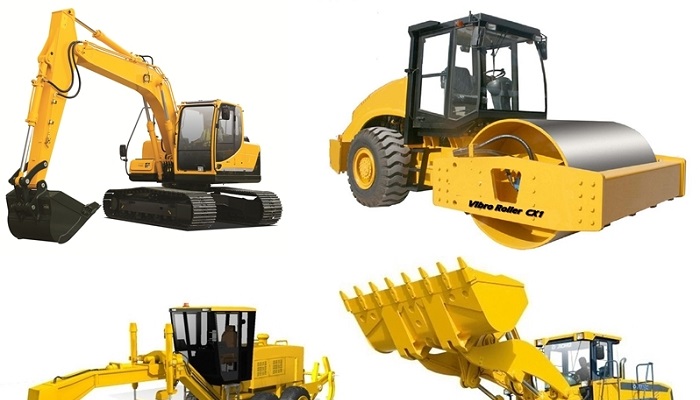Heavy industrial assets are difficult to manage. While crucial to construction and manufacturing operations, machines typically carry high costs, complex maintenance needs and sustainability concerns, and they can quickly become outdated. Equipment-as-a-service (EaaS) could offer a better way forward.
The emerging field of EaaS could do to heavy machinery what software-as-a-service (SaaS) has done to digital technologies. Like SaaS, it moves away from a conventional ownership model to provide access to an asset’s newest iteration through an ongoing fee. It could also become the new industry standard, thanks to several key benefits.
Lower Upfront Costs
The most obvious advantage of EaaS is that it lowers financial barriers to using top-of-the-line equipment. Capital expenditures on machinery cost United States manufacturers more than $135 billion in 2021 alone. That doesn’t cover the construction industry’s asset-related capex, either. EaaS helps by converting those capital expenditures into operational ones.
Through EaaS, industrial organizations may ultimately pay the same as they would through conventional ownership. However, because these payments would be opex instead of capex, they would get immediate value for each installment. It also means that the initial investment is far lower, which makes it easier to scale up or implement new systems, leading to increased competition within the industry.
Faster Project Completion
EaaS could also help notoriously slow and delay-prone sectors achieve higher productivity. In the EaaS model, vendors, not users, are responsible for ongoing maintenance. As a result, companies do not fall behind schedules from repair-related downtime, and if an unexpected breakdown occurs, they can swap their machines for replacements to minimize the stoppage.
Renting-related maintenance optimizations alone can be enough to maintain project timelines in an industry where many fall behind schedule. Firms can gain even greater efficiency by not needing to wait for newer models to drop in price or to save up for a larger investment. The lower cost of entry means it’s possible to take on additional work sooner, leading to faster completion times.
Widespread Access to Newer Assets
Importantly, EaaS is about more than renting equipment. It follows SaaS’s blueprint of providing continual access to the newest available version of the asset. A conventional renting model may see companies borrowing old machinery, but in EaaS, they use the most technologically advanced versions.
Historically, adopting new industrial assets has been a prohibitively expensive and disruptive process. Those complications, in turn, have stood in the way of digital transformation and Industry 4.0. By making next-gen resources more accessible. EaaS could accelerate the pace of innovation in heavy industries.
Greater Sustainability
EaaS could help manufacturing and construction become more sustainable. These sectors are responsible for much of the world’s emissions, with 33% of greenhouse gases coming from buildings. Reliance on inefficient or fossil-fuel-powered equipment is a key piece of the puzzle, so EaaS could reduce this troublesome carbon footprint.
Cost barriers and the disruption of replacing current machines prevent many organizations from embracing electric or high-efficiency alternatives. However, EaaS would make these newer, cleaner options easier to adopt. As more companies take advantage of this accessibility, overall emissions from heavy industrial sectors would fall, helping businesses and nations progress toward net-zero goals.
Remaining Obstacles and the Future of EaaS
Despite these significant advantages, EaaS has not caught on across industries yet. Part of the reason is the model’s novelty. Many vendors have only begun offering EaaS options within the past few years, so their reach and availability have been limited.
EaaS accounted for less than 1% of equipment sales in 2023, despite the number of companies offering it growing from 39 to 56 in four years. One of the most common barriers among these providers is EaaS’s technological complexity. It requires cloud adoption, Internet of Things tracking solutions and digital billing services to work effectively, and many buyers and sellers in heavy industries lack this infrastructure.
Higher adoption of EaaS has been seen in more complex equipment, like robotics. This could suggest that organizations are more likely to recognize the value of EaaS when it applies to sophisticated systems that would be challenging to adopt otherwise. Consequently, focusing on high-tech solutions and better communication about how EaaS impacts technology costs could help promote the practice elsewhere.
Despite these obstacles, industry analysts remain bullish on EaaS. The U.S. market is currently worth an estimated $469 million but could surge beyond $7.8 billion by 2030. Demand for higher construction and manufacturing output will help that trend, as will more publicity about EaaS’s availability and benefits.
EaaS Is the Future of Heavy Equipment
EaaS has a long way to go before it becomes the new norm. However, it already shows significant promise. Industrial companies that embrace it could enjoy lower upfront costs, higher efficiency, rapid innovation and a lower carbon footprint. Those benefits are too tempting to ignore.
As the EaaS market matures, it could transform heavy equipment the same way SaaS did to software. That change may take time, but it will yield considerable benefits for all involved when it occurs.

